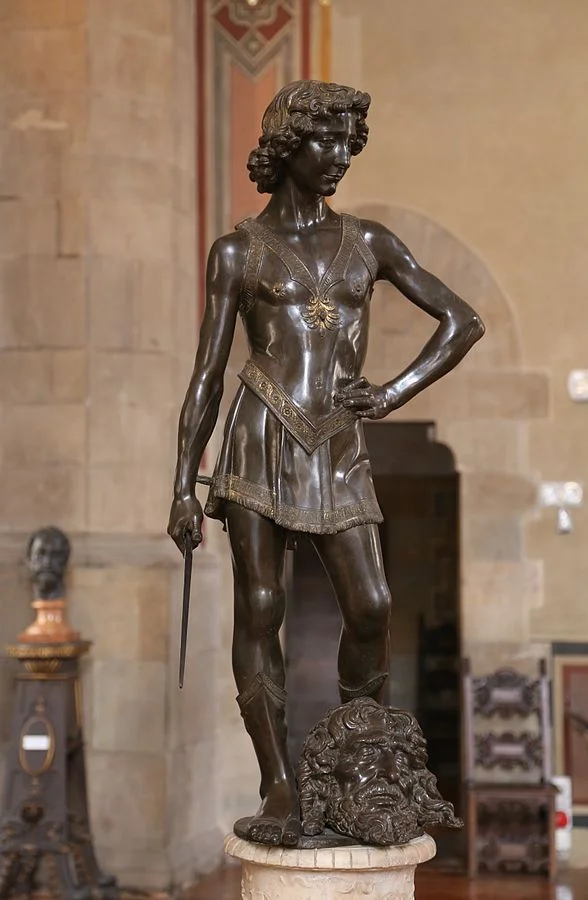He’s one of the most famous Biblical heroes and the subject of countless Renaissance sculptures and paintings.
In this post, we’ll take a closer look at some interesting facts about David by Donatello, one of the most fascinating works by this influential Renaissance artist!
1. Donatello actually created 2 David’s
When we refer to David by Donatello, it refers to 2 separate statues that were created in the 15th century. The first is a marble statue created during the early phase of the Renaissance in 1408.
The more famous of his 2 David’s is a bronze statue that was created many decades later. Both masterpieces of this extraordinary Renaissance artist can now be found at the Museo Nazionale del Bargello in Florence, Italy.

2. It depicts the main character in a popular Bible story
The story of David and Goliath is one of the most popular Biblical stories in history. The main reason is that it resonates with the emotion of supporting the underdog.
In this story told in 1 Samuel 17 of the Old Testament, the battle between the Israelites and the Philistines can be sorted during single combat between the biggest warrior of the Philistines named Goliath, and a contender from the Israelites.
Upon seeing the giant, none of the greatest warriors on the Israelites’ side want to fight. This is until a young boy named David, who is still too young to become a soldier, accepts the challenge. He pulls out his sling, hits the giant in the head with a stone, and ends up cutting off Goliath’s head with his sword.
This story is essentially a metaphor that illustrates the victory of good over evil.
3. The marble David was one of Donatello’s first commissions
Donatello was born in the year 1386 which means he was still in his early twenties in 1408 when he earned his first major commission. This was the create a marble statue of David.

Because it was still early on in his career, we can see that the Renaissance influence wasn’t as prominent as in his later works. The statue was created in an International Gothic Style, emphasized by the lack of expression on David’s face.
The only element that hints at the transition Donatello went through in the following decades is the head lying at David’s feet, which shows signs of the emerging Renaissance style.

4. The original version was never placed in its intended location
The first commission of Donatello was a dual commission. He created the marble statue of David and another sculptor named Nanni di Banco created the statue of Isaiah.
Both statues were commissioned to decorate the buttresses of Florence Cathedral, one of the most amazing churches in the world.
One of the most remarkable facts about David by Donatello is that even though the statue of Isaiah was lifted into position in 1509, it was quickly brought down again because it was deemed way too small to be visible on top of the massive church.
Donatello’s marble David wasn’t even lifted to the top of the church and remained in the workshop of the Cathedral’s management for several years until it was moved to the “Palazzo della Signoria,” now known as the “Palazzo Vecchio,” which is the town hall of the city of Florence.
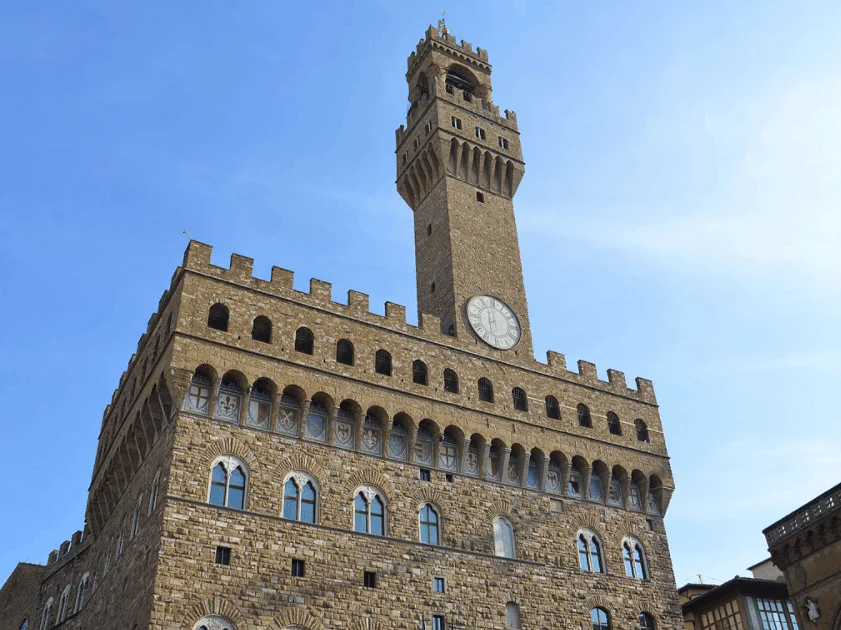
5. The bronze David was created 6 decades before Michelangelo’s masterpiece
Donatello’s bronze statue of David shouldn’t be confused with arguably the most famous statue in the world, David by Michelangelo. It’s one of many versions depicting the hero of the Biblical story and was created in the early 16th century, most probably about 6 decades before Donatello’s version.
What’s fascinating is that, similar to Donatello’s statue, Michelangelo’s masterpiece was also commissioned to decorate the roof of the Cathedral in Florence but never made it there.
Michelangelo didn’t make it too small, but because of its enormous size (the statue stands 5.17 meters or 17 feet tall and weighs over 6 tonnes), it wasn’t even possible to lift it in position at the time. That’s why it was located in front of the entrance of the Palazzo Vecchio until 1873 when it was moved to the Galleria dell’Accademia in Florence.
The statue of David by Donatello is seriously shorter as it stands about 159 centimeters (5.25 inches) tall.

6. The bronze version was a revolutionary sculpture in many ways
One of the most fascinating facts about the statue is that it was the first time that a nude male freestanding statue was created since antiquity. Apart from the laurel-topped hat and his boots, David appears completely naked.
He also holds the sword of Goliath in a rather feminine way and he is slightly smiling in an enigmatic way.
Perhaps even more astounding is that this was the first unsupported standing work of bronze cast that was created during the Renaissance.
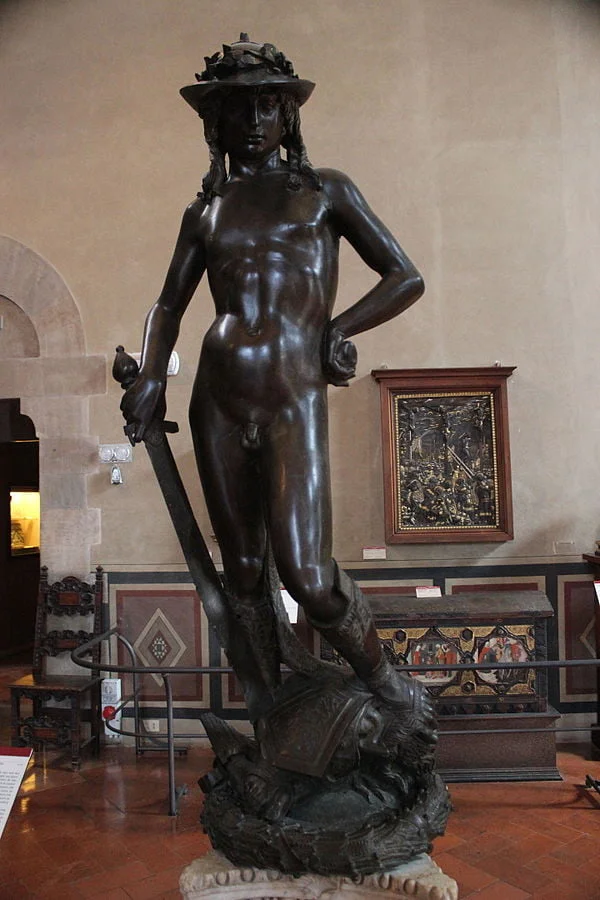
7. It’s unclear when and why the sculpture was created
There are a lot of assumptions to be made about the bronze statue of David. It hasn’t been properly documented so we don’t know who exactly commissioned it, even though most historians agree that it was probably ordered by Cosimo de’ Medici.
If that’s the case, it was also most probably politically inspired.
Because the Palazzo Medici was being constructed in the 1440s, it’s assumed that it was intended to decorate the courtyard of the new Medici Palace in Florence, and it was created around this time as well.
What we do know is that it was present in the Medici’s new palace by 1469, meaning it was probably installed there shortly after it was created.
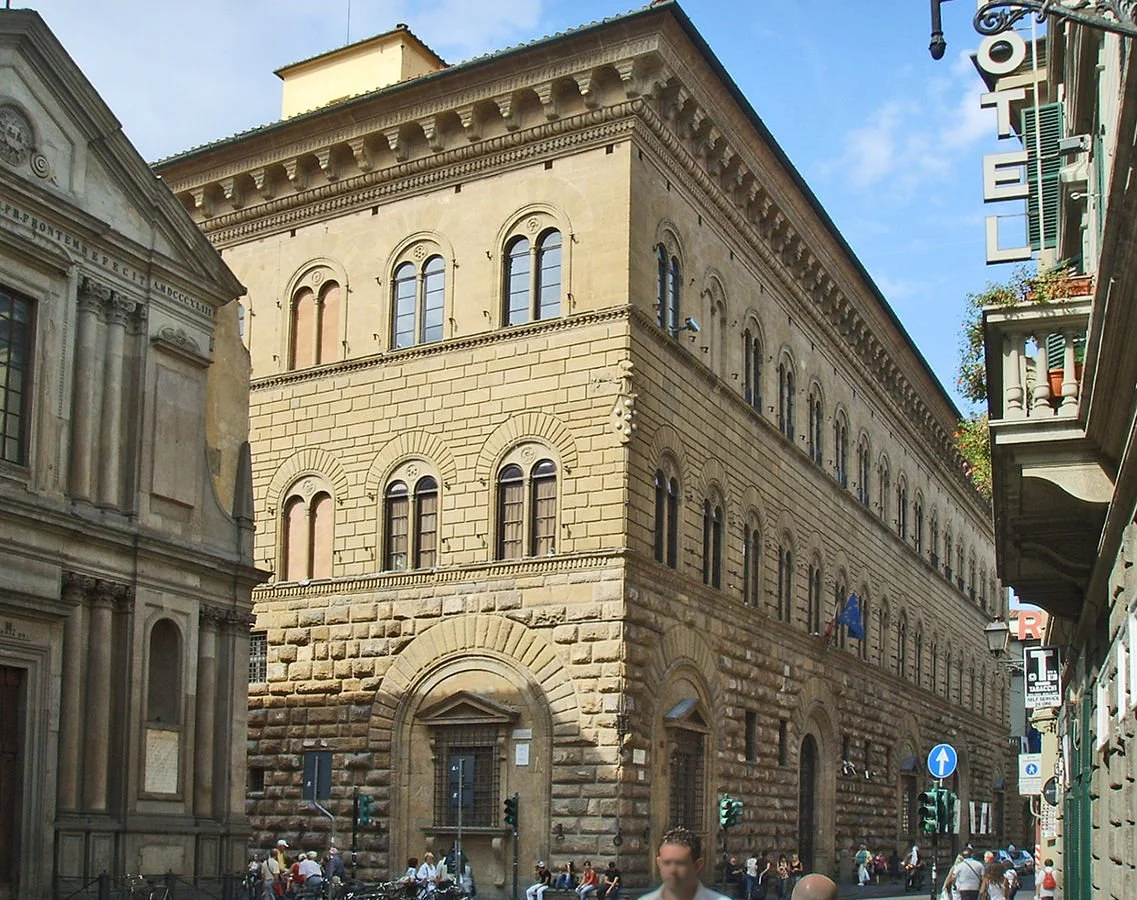
8. The Bronze statue was moved multiple times in its history
The Medici’s were exiled from Florence in the year 1494, which is the reason it was moved multiple times in its history:
- It was moved to the courtyard of the Palazzo Vecchio at the end of the 15th century, joining Donatello’s original David.
- It was moved to the new palace of the Medici’s, Pitti Palace, in the 17th century.
- It was installed in the Uffizi Gallery in the year 1777.
- It was moved to its current location, the Museo Nazionale del Bargello, in 1865.

9. The statue underwent an 18-month restoration in the 2000s
The bronze statue of David has never left Florence in its nearly 6 centuries of existence, but it did move quite a bit. This resulted in a lot of dust accumulating on its bronze surface, something referred to as “mineralized waxings.”
It wasn’t until the year 2007 that the statue has been renovated for the first time, though, a process that lasted for 18 months between June 2007 and November 2008.
This delicate job was done with scalpels on the non-gilded areas and lasers on the gilded areas, something that turned the nearly 600-year-old David into pristine condition again!
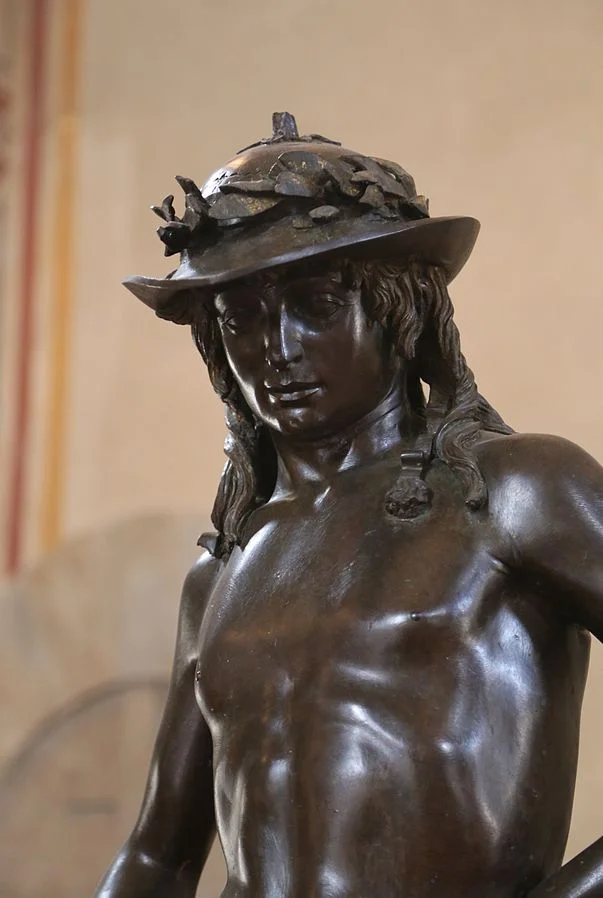
10. Donatello’s David became the inspiration for multiple works
The bronze statue of David was revolutionary and has become the inspiration for multiple variations. We already mentioned David by Michelangelo, but there are multiple Davids that were inspired by Donatello’s masterpiece.
Perhaps the most famous of all apart from Michelangelo’s is David by Andrea Del Verrocchio, a bronze statue created in 1470.
If you want to see copies of all 3 of the most famous representations of the Biblical hero, then you can visit the Victoria and Albert Museum in London which features 3 exact replicas of the 3 wonderful sculptures.
Or, you can visit the wonderful city of Florence to see the 3 real statues firsthand!
